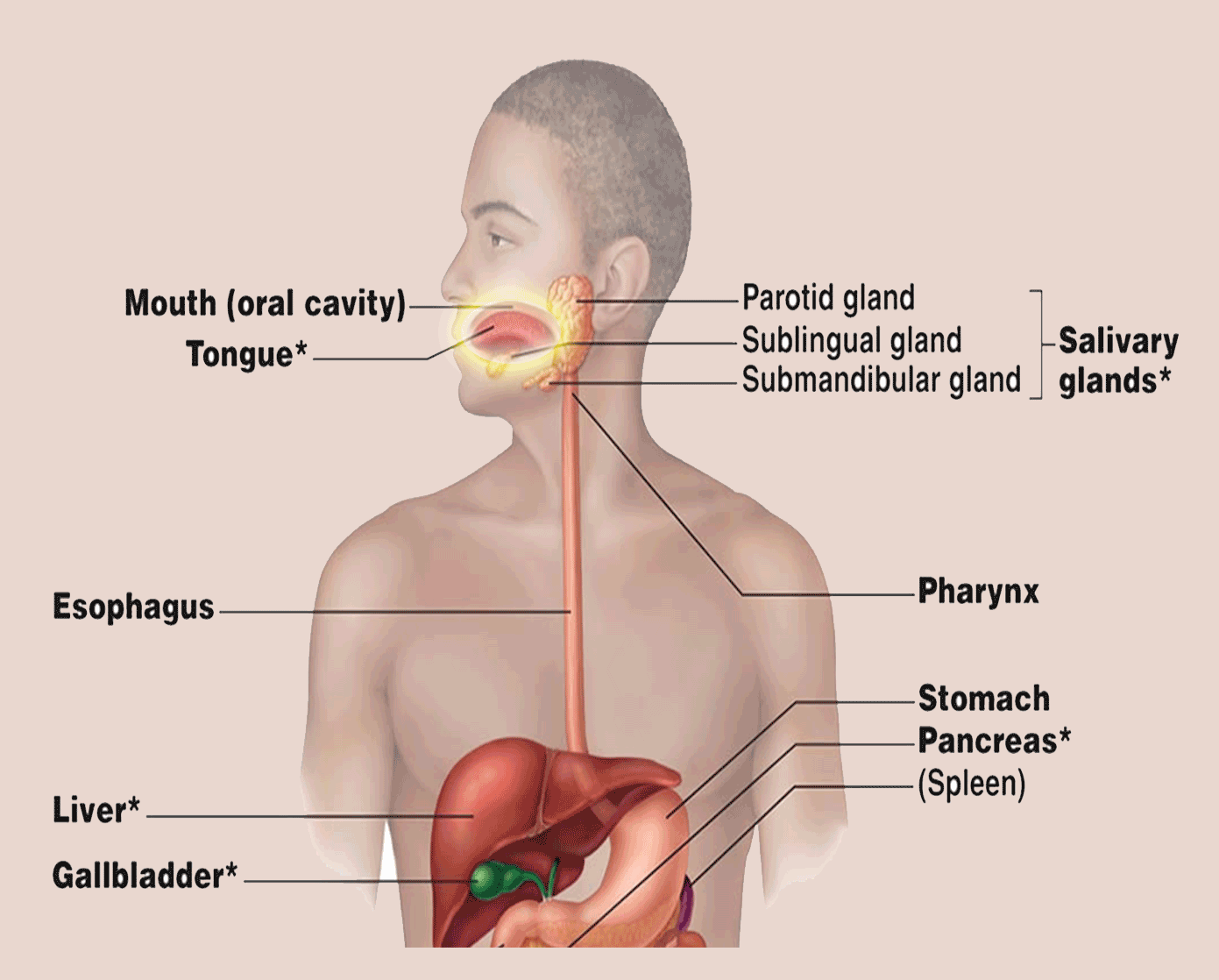Mouth
The mouth contains teeth and tongue which break down food into smaller pieces.

The mouth contains teeth and tongue which break down food into smaller pieces.
The lump of chewed food from the mouth forms a bolus which is swallowed into the esophagus, which is moved by peristalsis to the stomach. Peristalsis: the involuntary constriction and relaxation of the muscles of the intestine or another canal, creating wave-like movements which push the contents of the canal forward.
Cells in the liver make bile; amino acids not used for making proteins are broken down to form urea, which passes to the kidneys for excretion; excess glucose is removed from the blood and stored as glucogen in liver cells.
Gall bladder stores bile from the liver; the bile is passes along the bile duct into the small intestine, where it neutralises the stomach acid in the chyme.
Acid and protease enzymes are secreted to start protein digestion; movements of the muscular wall churn up food into a liquid.
Salivary glands produce liquid saliva, which moistens food so it is easily swallowed and contains the enzyme amylase to begin breakdown of starch.